(27103 products available)



















































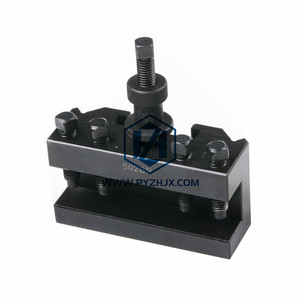









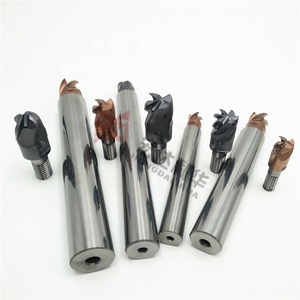
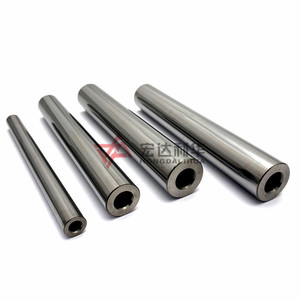














































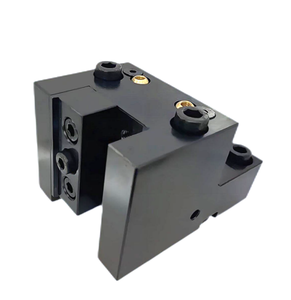
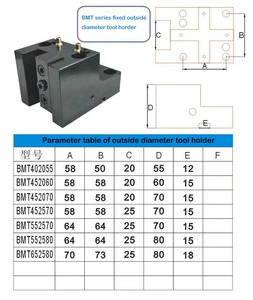


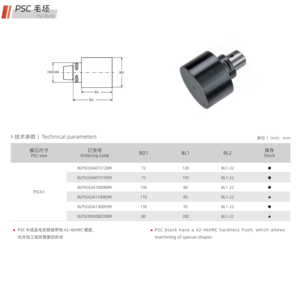

















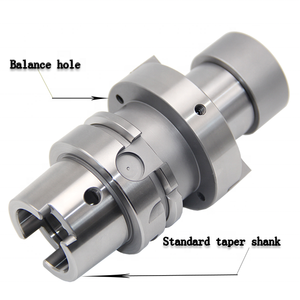
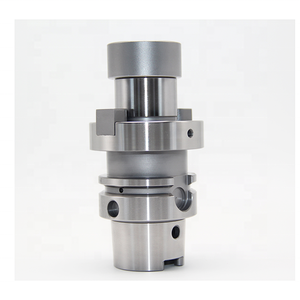
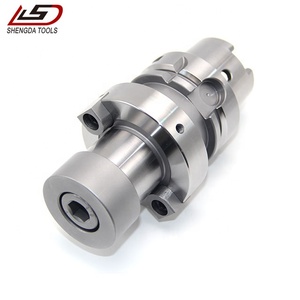









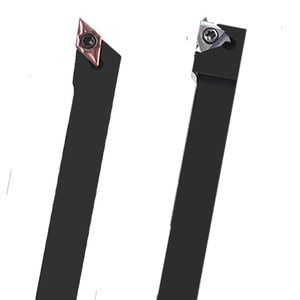






















































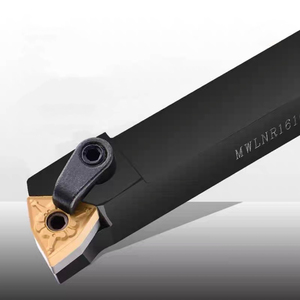











A tool holder for turning is a part of the lathe that holds cutting tools and positions them appropriately against the workpiece when machining it. Numerous types of tool holders are designed for different types of tools and can be used on various lathes.
Boring Bars
Boring bars are the holders for tools known as boring tools, which are primarily used to increase the diameter of a previously existing hole or cavity in a workpiece. Typically, they comprise a long, thin metal bar that possesses a clamping mechanism at one end for securing the cutting tool and a tool post or shank at the other end for attaching it to the lathe. The geometry of boring bars allows them to access holes with limited openings, making them suitable for machining operations that require high precision or tight tolerances.
Grooving Tool Holders
These tool holders are specifically designed to accommodate grooving tools, which are used to create grooves or narrow slots on the surface of a workpiece. The geometry of these tool holders may vary depending on the type of grooving tool being used, but they typically feature a straight or curved shape that resembles the cutting edge of the groove. Some common types of grooving tool holders include dovetail holders and form holders.
dielectric tool holders
These tool holders are used to secure cutting tools for machining operations that involve dielectric fluids as coolant or lubrication. Dielectric tool holders are designed to be compatible with dielectric cooling systems, which are commonly employed in high precision machining applications or when using specific types of cutting tools that require dielectric lubrication. Depending on the machining setup and cutting tool type, dielectric tool holders may have features such as clamping mechanisms, adapters, or interfaces that allow for proper integration with dielectric cooling systems.
These tool holders are used to secure multiple cutting tools simultaneously, allowing for quick changes between them during the turning process. They are commonly employed in turret lathes orTurning centers where efficiency and productivity are essential. Multiple tool holders can accommodate various types of cutting tools, such as turning inserts, parting tools, grooving tools, and threading tools, among others.
Indexable Tool Holders
Indexable tool holders are designed to accommodate cutting tools with interchangeable inserts. These holders provide support and proper alignment for the indexable tools during the turning operation. The shape and configuration of indexable tool holders may vary based on the specific type of indexable tool being used, such as turning tools, parting tools, or threading tools, among others.
The turning tool holder is compatible with various machining tools and lathes. Therefore, it can be used extensively in different industries.
Machining industry
In this industry, turning tool holders are used for machining operations. Such operations include facing, boring, turning, grooving, drilling or threading. They are compatible with different tool holders to accommodate various machining tools.
Manufacturing industry
Tool holders for turning are extensively used in this industry for mass production and automated machining. For instance, they can be used in CNC lathes during lavish and automated machining. They can also be used in robots fitted with turning machines to perform complex machining tasks with high precision.
Automotive industry
In the automotive industry, turning tool holders are used for machining parts like shafts, gears and sleeves. Also, they are used together with CNC lathes for turning operations. Thanks to their precision and efficiency, these tool holders ensure that the automotive industryproduces high-quality components.
Aerospace industry
Tool holders for turning are used to machine precision components in the aerospace industry. For example, aerospace supports use turning machine holders to optimize complex shapes and achieve tight tolerances. Tool holders for machining can also be used to cut materials like titanium and Inconel.
Woodworking industry
In this industry, tool holders for turning are mainly used to machine wooden lathes. They are used to create furniture pieces like cabinets, tables and decorative columns. Precision turning tool holders allow for efficient and accurate woodworking.
Medical industry
Turning tool holders for machining are used for turning medical equipment such as dental equipment and surgical instruments. The tool holders allow for accurate machining of complex medical devices and components.
Selecting the right tool holders for turning is crucial for maximizing the performance of CNC lathes and achieving high-precision machining. Buyers should consider their specific needs and requirements.
Machining Requirements
Understand the nature of the machining tasks at hand. This includes the material type, workpiece geometry, cutting tools, and machining parameters. These factors will help determine the size, shape, and features of the tool holders for turning that are suitable.
CNC Lathe Compatibility
Ensure that the selected tool holders are compatible with the CNC lathes in use. Consider factors such as the holder's shank size and form and how it fits into the machine's turret or pocket. Also, consider the mounting system (e.g., ANSI, CAT, BT) to ensure proper fit and secure rigidity.
Precision and Accuracy
Look for tool holders that provide the required precision and accuracy for the intended machining tasks. Consider factors like runout (the holder's taper's deviation from a perfect cylinder) and accuracy specifications provided by manufacturers.
Ease of Tool Change
Consider the ease and convenience of changing tools in the holder. Quick-change systems or devices with standardized interfaces can reduce downtime during tool changes and improve productivity.
Cost and Value
While cost considerations are important, focus on the value provided by the tool holders. Balance performance, quality, and durability against the price. Investing in high-quality holders can result in long-term cost savings through improved tool life and machining efficiency.
Supplier Reputation
Choose reputable suppliers with a proven track record in offering tool holders for turning. Research suppliers, read reviews, and consider feedback from other users to ensure reliable sourcing.
Q1: What materials are commonly used for tool holders in turning operations?
A1: Tool holders for turning are made with materials like high-strength steel, alloy steel, or carbon steel. Some may have coatings for added durability. The materials give the holders strength and stability during turning.
Q2: How do tool holders for turning fit onto lathes?
A2: Tool holders attach to the lathe via a tool post. They may clamp, slide, or lock into place to secure at various positions. This way, they will hold the cutting tool steadily. Adjustment allows the holder to align different tools for the workpiece.
Q3: What are the safety precautions when using tool holders for turning?
A3: Some safety tips are: Check the holder before each use. Make sure the tool is secured and working well. Adjust it properly to avoid accidents. Also, keep hands clear of moving parts. Turn off the lathe while making adjustments.
Q4: Can tool holders for turning be modified for special tools?
A4: Yes, sometimes it is necessary to modify or adapt the tool holders to accommodate special or non-standard cutting tools. This is especially true for complex projects that require unique specifications.
Q5: Are tool holders for turning standardized across all lathes?
A5: No, there is no standardization. This means that the tool holders may vary depending on the make and model of the lathe. Please, look carefully at the tool holder to ensure compatibility with the existing lathe machine.